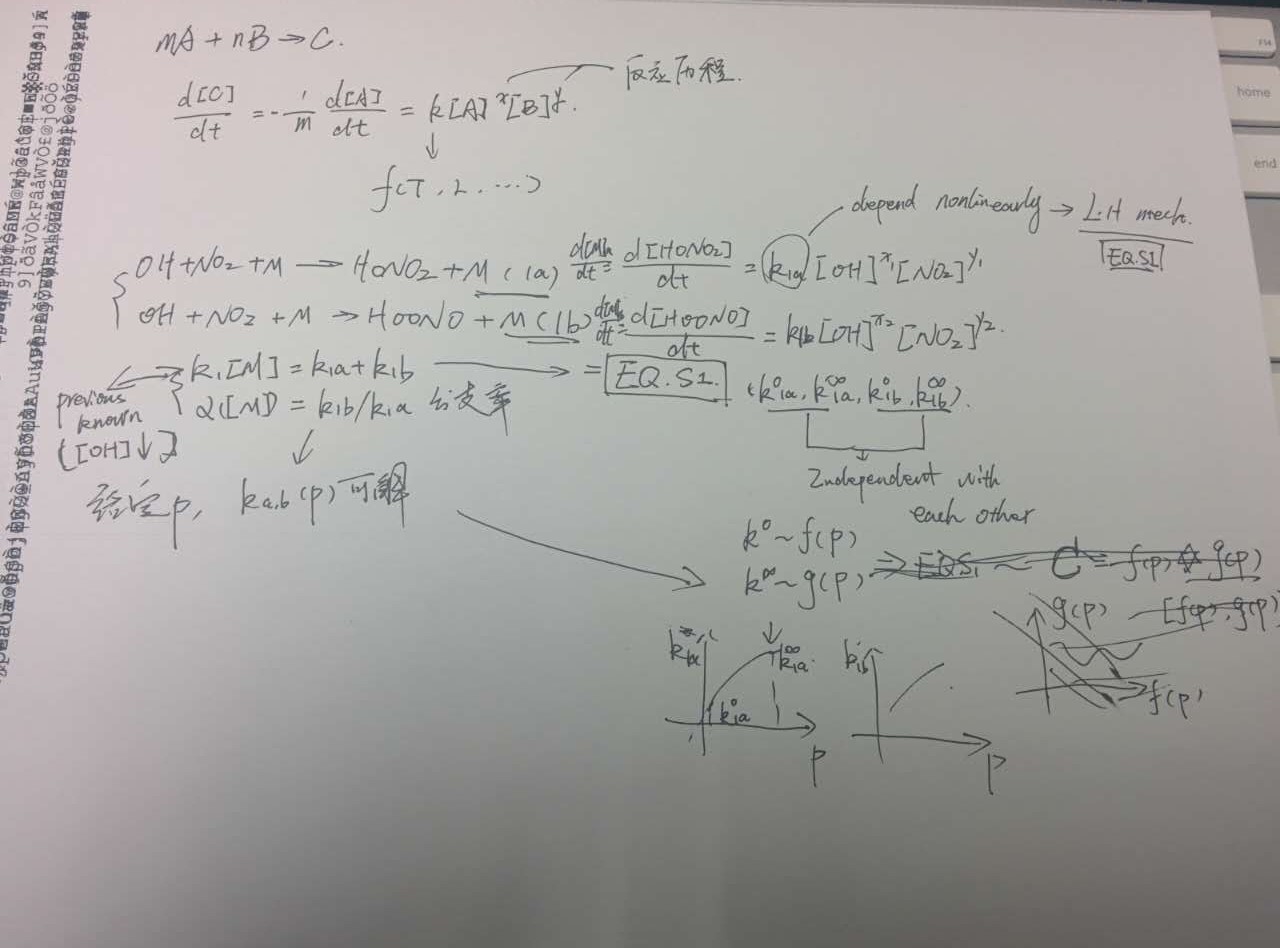Welcome to LZN's Blog!
Wind extinguishes a candle but energizes fire.-
Mac OS终端与Linux终端的使用区别
John给了组里Mac Mini的账号,后面确实要开始用Mac工作了,先把NCL配置好,使用过程中发现了一些和Linux终端不同的地方,配置过程记录在这里:
1.登录终端后默认载入环境变量的位置不同:Mac为.bash_profile,Linux为.bashrc
2.配置终端显示颜色:
alias ls=’ls -G’
http://www.2cto.com/os/201205/133944.html
3.配置vim
git clone https://github.com/Novarizark/config_files
-
git clone project
-
按NCL官网 http://ncl.ucar.edu/Download/macosx.shtml 步骤安装NCL
5.1 注意登录时看到remote server禁止x11访问,
WARNING! The remote SSH server rejected X11 forwarding request
调整xhost发现似乎有错误,应该是有东西没装,先不管。
5.2 安装XQuartz,
Mac下用curl命令下载,格式
curl -o 文件名 ‘url’
curl -O ‘url’
https://cnbin.github.io/blog/2015/06/14/mac-os-zhong-duan-xia-shi-yong-curl-ming-ling-xia-zai-wen-jian/
gcc与gfortran出现错误用brew doctor解决。
-
-
SMOKE-learn
HKUST使用空间查看:
quota -uvs huangyeq
Assign files是一堆设置环境变量的文件。
SMKROOT
-
Mollner-Science-2010
2016/10/02
题目:Rate of Gas Phase Association of Hydroxyl Radical and Nitrogen Dioxide 原文:Mollner-Science-2010-330_6004_646-649.pdf
内容概述:氢氧自由基(Hydroxyl Radical)和NO2(Nitrogen Dioxide)反应生成气态硝酸这一过程是大气化学中最具影响的反应。但是目前关于这一反应在对流层内条件下速率的测量依然研究不足,主要原因是 1. 实验室测量760torr(毫米汞柱)气压下反应速率的困难 2. 该反应存在的二次反应通道,产物:过氧亚硝酸(peroxynitrous)量。更加加剧了测量的不确定性。研究者结合了两种激光光谱学(Spectroscopy)技术来测量两个反应通道的总速率以及在25摄氏度,760毫米汞柱下的反应分配比例。结果相比于(之前的)反应常数,当然是更准确啦,所以我们将测量的东西拿到model里去试了一下对洛杉矶地区Ozone的预报模拟,结果我猜肯定是更好啦。
笔记:文章思路很简单,就是把之前没测准的东西想个办法测准了,然后用model测试了下,挺好。所以他们主要想装逼的是:用了牛逼方法搞定了之前大家搞不定的技术难题。反正就是测量反应速率里的系数k,说了一堆看似高端的原理机制,也就是这么一回事。Fig S1里他们设计的高端实验机器系统那张图可以说下,反正不懂,可以留给老师解释下那些仪器是搞什么鬼的……大概意思是用个泵抽气,然后对着气放了两道(浅蓝和深蓝)激光,之后分析这两道激光散射光谱确定物质的量,进一步确定反应速率常数。
图1示意了这两个channel反应,图1上面的文字介绍了分支反应的特殊特点:在较低的压力下,过氧亚硝酸的生成是个小分支,但是随着气压增大,分支率增大。随后一段引出目前矛盾:实验室测定这一反应速率系数的时候,只是测定NO2存在下OH的减小,因此只是测定的分支1+分支2反应的总系数。(k1=k1a+k1b)
之后的段落阐述了困难的两个方面。
图2对比了作者的牛逼方法测量的结果和之前几个组织(有个JPL,喷气动力实验室,加州理工的实验室,曾经很牛逼,钱学森在的时候)的结果,这张图很容易看啦。反正就是他们测得k1小,误差小;阿尔法系数他们独一无二的给出来了,k1a测量情况有点像JPL 2000.
之后他们用自己测量的系数去模拟南加州的正午ozone污染,A是JPL2006推荐的,B是他们测得,C是被吐槽的IUPAC推荐的高k1a模拟结果,(注意他们没有观测图呢)。总之他们强调k1a小10%,ozone浓度提高10%(这就说明他们准么?难道模拟O3从来就是偏低的?)。我觉得这篇文章最大不足就是没有观测对比呀,宝宝要提出来!
背景知识:化学反应速率
发现高中的东西全忘了 = =
维基百科复习下:https://zh.wikipedia.org/wiki/%E9%80%9F%E7%8E%87%E6%96%B9%E7%A8%8B
- R星创始人、《侠盗猎车手》与《荒野大镖客》创作者丹·豪瑟2025年11月播客实录 | 中英文完整版精译 Part3
- R星创始人、《侠盗猎车手》与《荒野大镖客》创作者丹·豪瑟2025年11月播客实录 | 中英文完整版精译 Part2
- R星创始人、《侠盗猎车手》与《荒野大镖客》创作者丹·豪瑟2025年11月播客实录 | 中英文完整版精译 Part1
- Existence Series (Part 1) | Eternal Recurrence: If your life ended right at this moment, would you choose to replay it?
- 存在篇(一) | 永恒轮回:如果,你的生命,终止于此时此刻,你会选择重播它么?
- Earth: My Past 45 and a Half Years Have Been Relatively Peaceful, Until I Raised Humans for 8 Hours...
- 地球:我过去45年半过得还算平静,直到养了8小时的人类……
- Telegram创始人帕维尔·杜罗夫2025年10月播客实录 | 中英文完整版精译 Part4
- 高压教育、游戏开发、极致优化:Telegram创始人帕维尔·杜罗夫2025年10月播客实录 | 中英文完整版精译 Part3
- Telegram创始人帕维尔·杜罗夫2025年10月播客实录 | 中英文完整版精译 Part2
